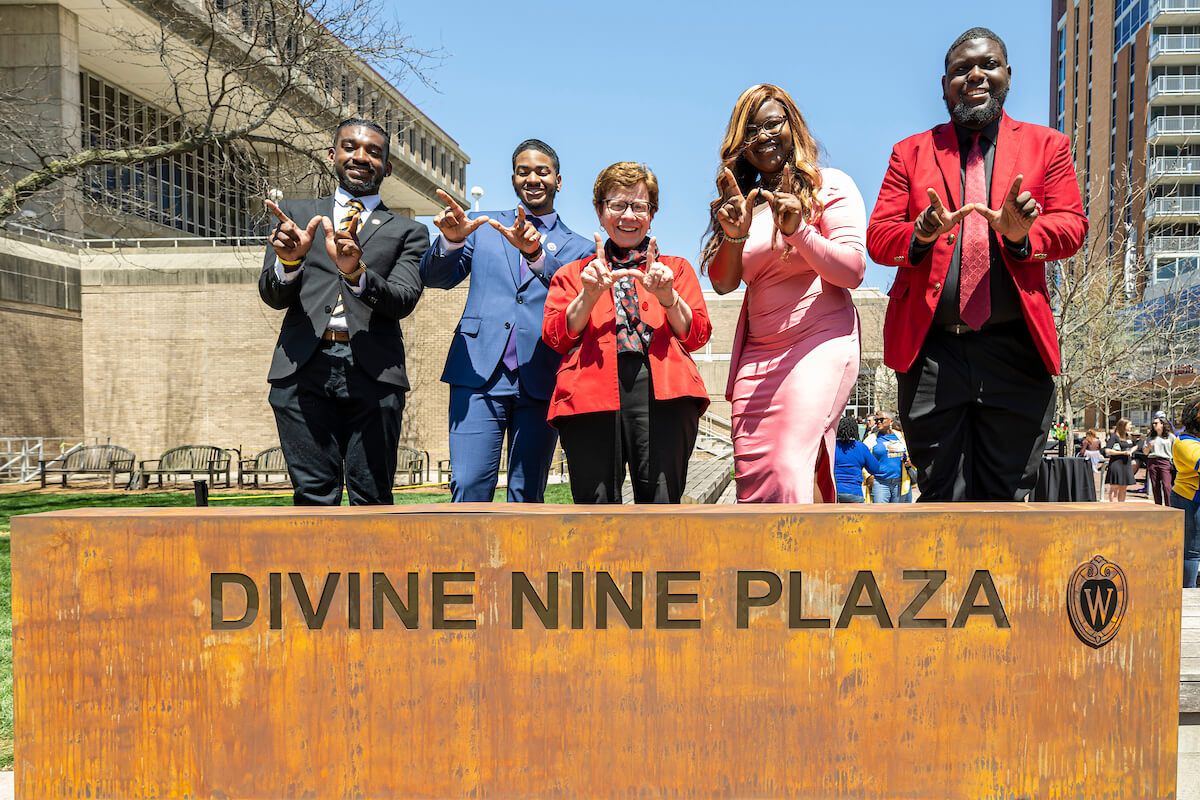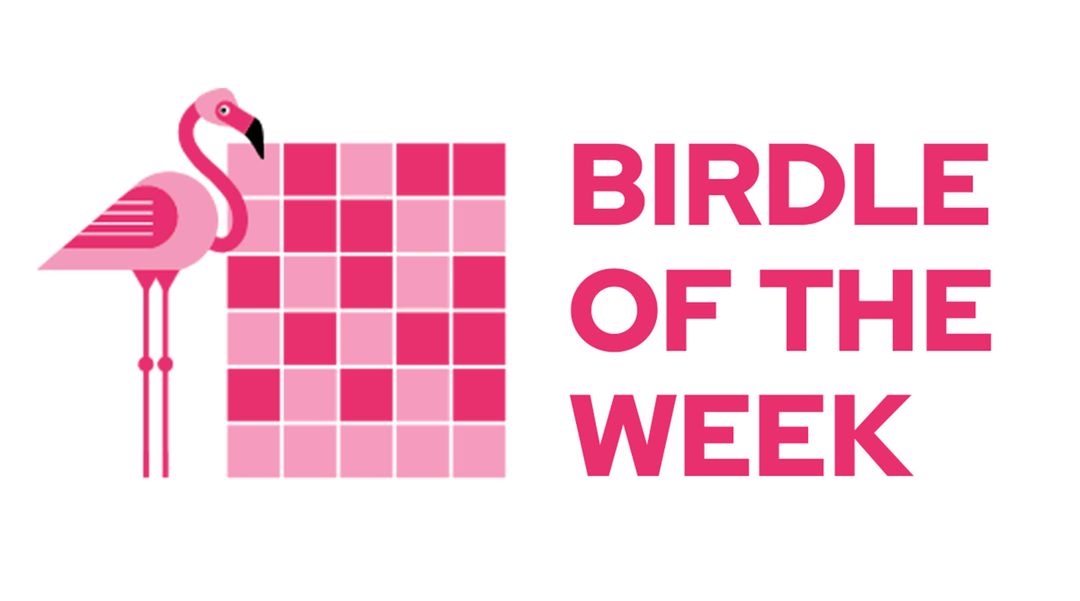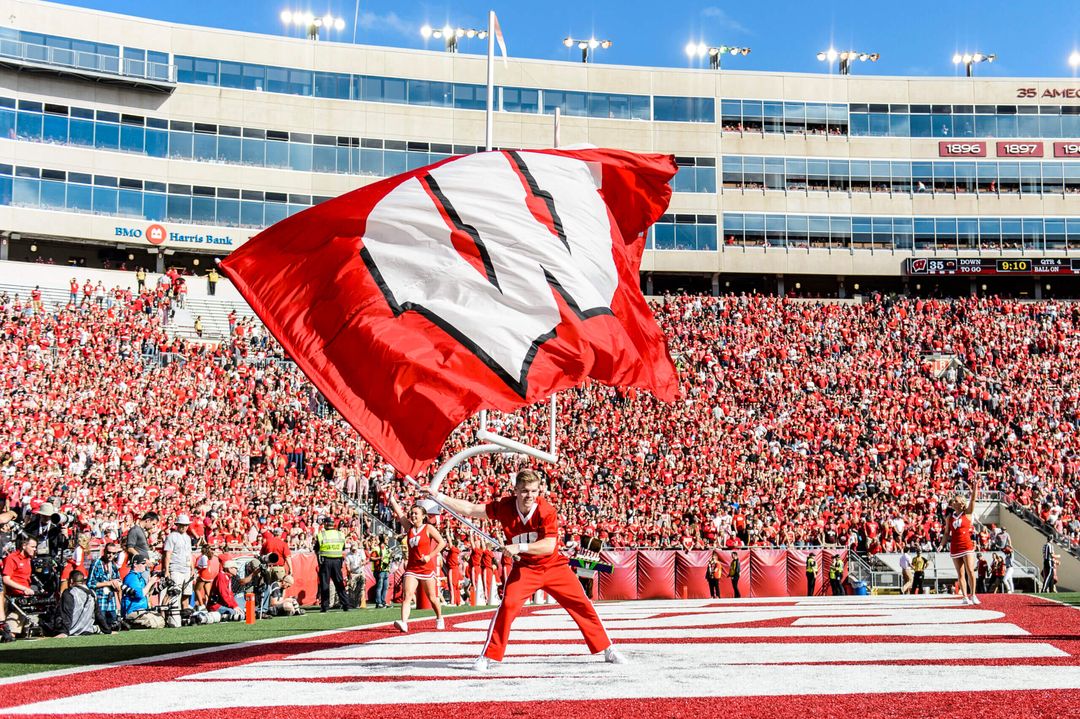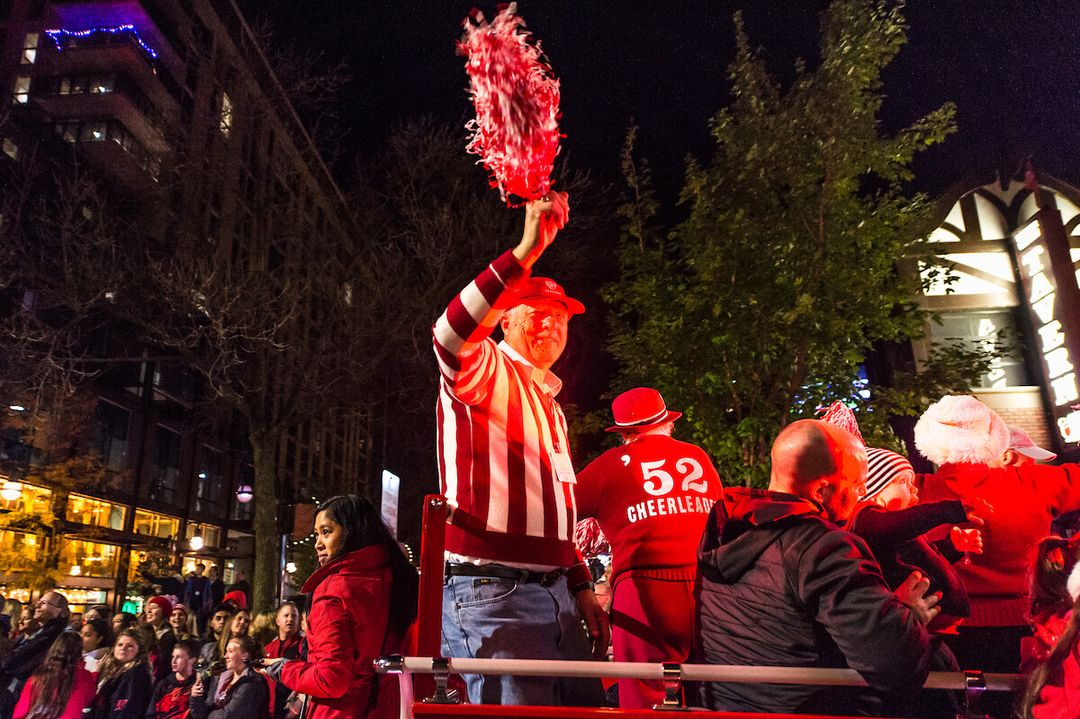At the spot on the south side of campus, where East Johnson Street meets East Campus Mall, a series of nine upright panels stand in a circle like an oxidized-steel Stone Henge: each panel is a monuments to one of the historically Black fraternities and sororities that make up the National Pan-Hellenic Council.
This is the UW’s new Divine Nine Plaza, which opened in May 2022. The Greek-letter organizations represented here — known colloquially as the Divine Nine — have supported Black students at colleges and universities across America for more than a century, and they’ve been part of UW–Madison since 1946. The plaza honors the organizations’ presence on and contributions to campus, but its message runs deeper than a simple “we are here.” The monuments also implicitly gives visitors a message about equity and collective action.
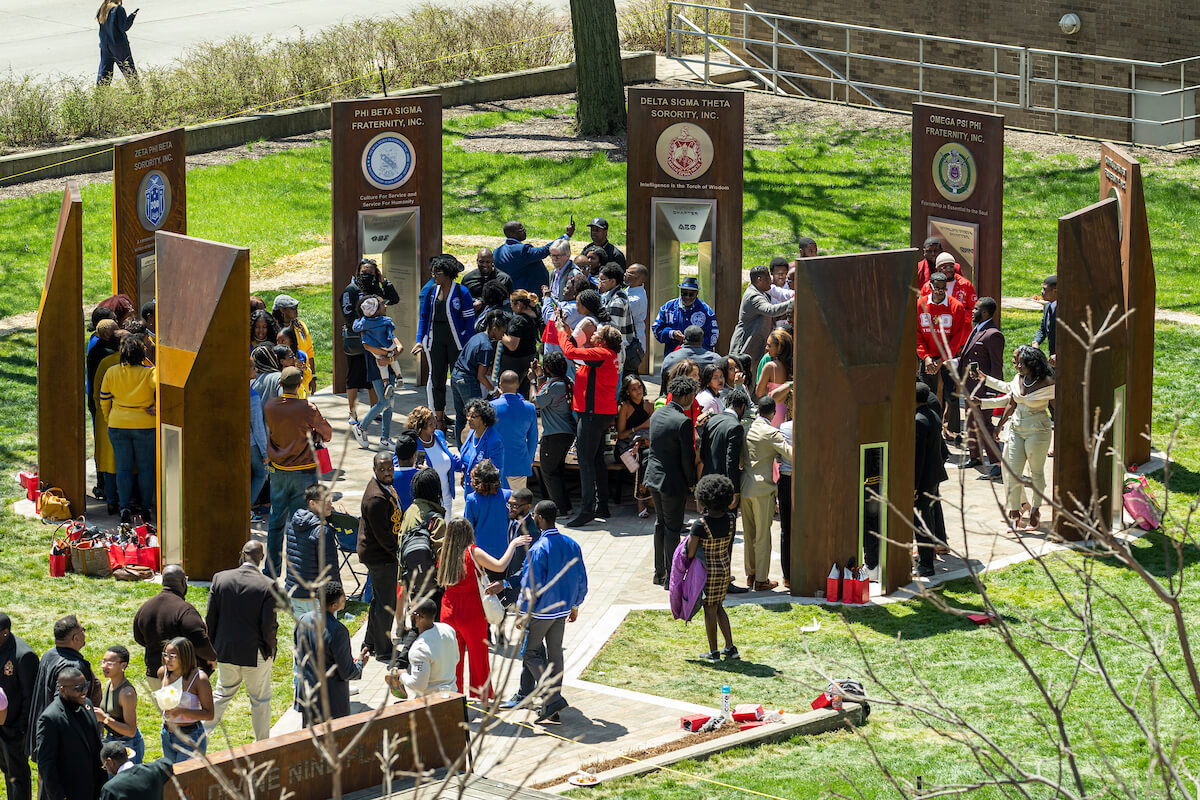
The Divine Nine consist of Alpha Kappa Alpha Sorority, Alpha Phi Alpha Fraternity, Delta Sigma Theta Sorority, Iota Phi Theta Fraternity, Kappa Alpha Psi Fraternity, Omega Psi Phi Fraternity, Phi Beta Sigma Fraternity, Sigma Gamma Rho Sorority, and Zeta Phi Beta Sorority. Not all have been represented on campus consistently — only six are active at UW–Madison this academic year. But each has a monument made of Cor-Ten steel, with the organization’s crest embedded in stainless steel and acrylic, and the Madison chapter’s letters are engraved in the monument’s body. The circular arrangement is meant to show that none comes first and none comes last.
“The design was a collective experience [generated] through workshops with representatives from the Divine Nine,” says Nick Novak, who served as project manager for the architectural firm SmithGroup JJR. Novak worked with a UW committee led by Christian McGough and Maggie Hayes of Fraternity and Sorority Life and Mark Guthier from the Wisconsin Union, as well as students Israel Obey ’21, Kyla Pollard x’25, Nyla Mathis ’21, MDx’27, Elijah Holmes ’21, and Adrianna Griffin-Phipps ’22.
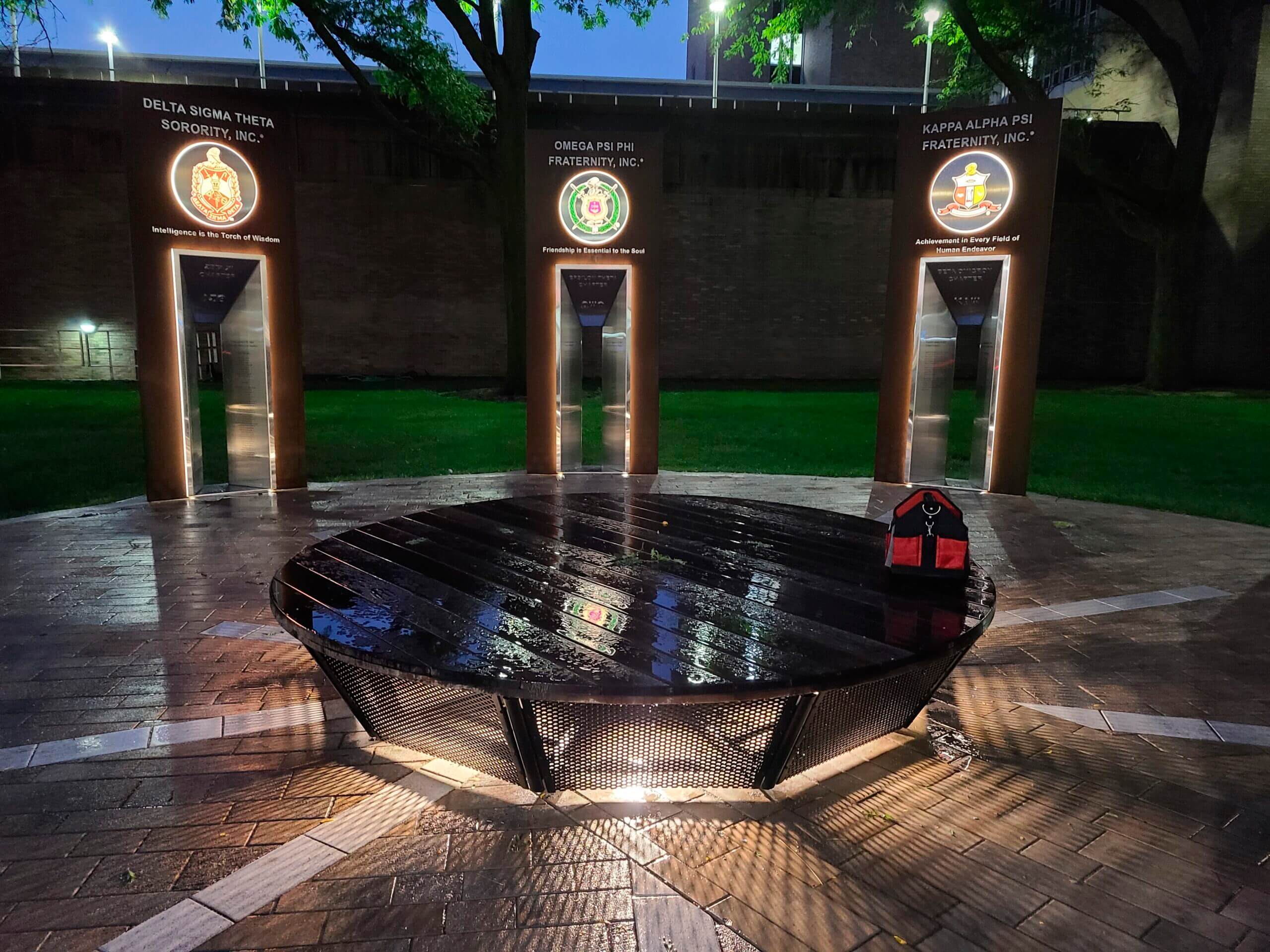
“In this environment, you enter the space from one direction, so you're immediately inside the room, you get equal representation every which way you look essentially,” says Novak.
Each monument also includes an aperture through which light shines, “an extension of the symbolism,” according to Novak, as it gives a sense of the chapters opening and changing over time.
